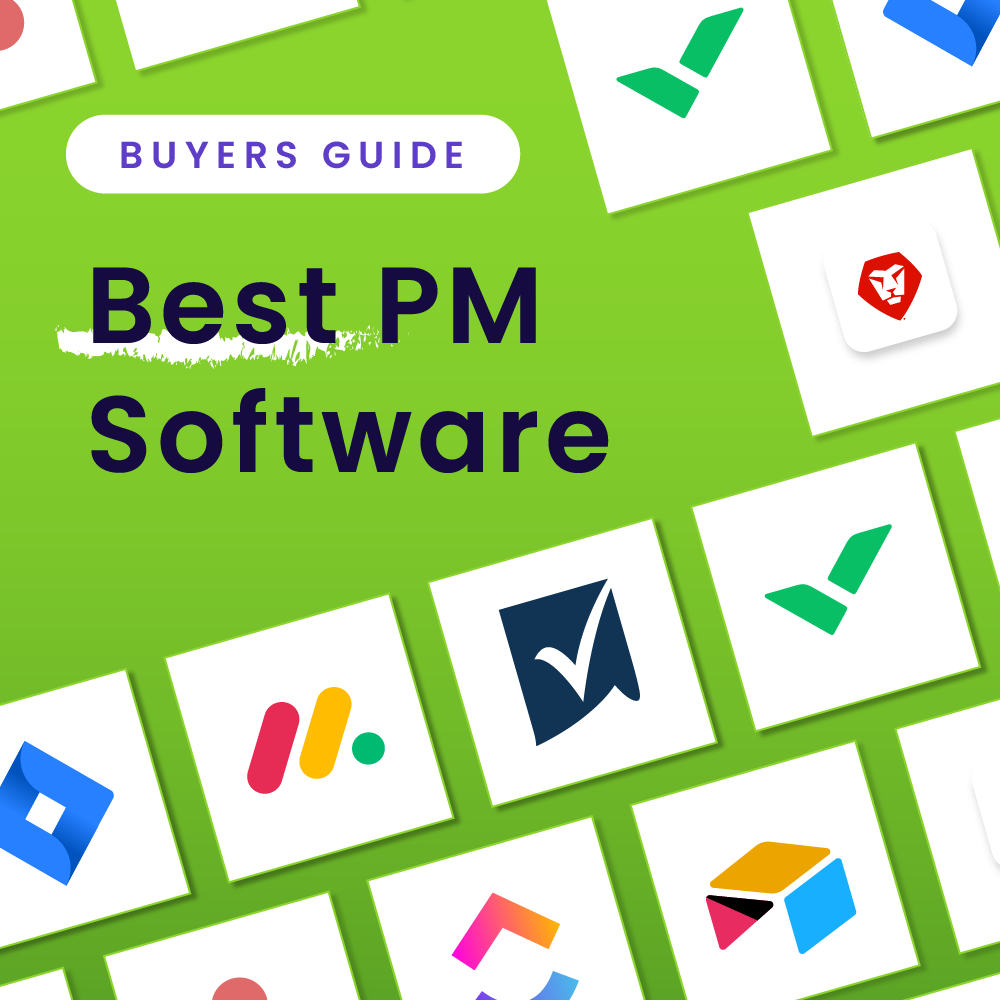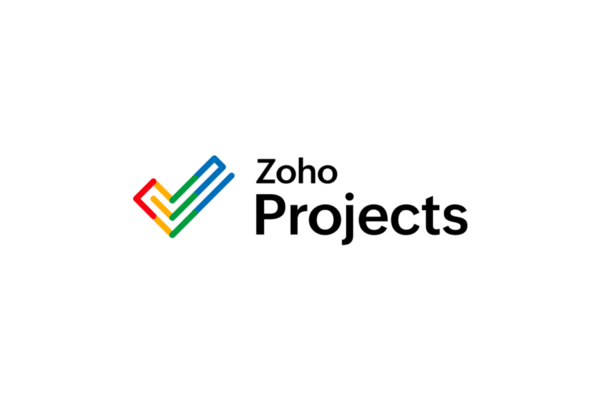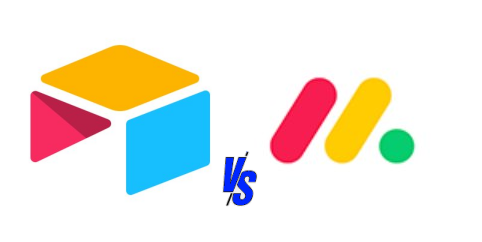ClickUp and Airtable are both well-loved tools by project managers across many industries. They both have powerful features that can help teams manage loads of information and facilitate efficient collaboration. Let’s go over their key features so you can evaluate which fits your needs better.
What is ClickUp?

ClickUp is a project management tool that aims to simplify the way teams work together. It offers a wide range of features such as task management, time tracking, goal tracking, and collaboration tools to help teams streamline their workflows.
ClickUp’s user-friendly interface and customizable features make it easy to adapt to any team’s unique needs. With ClickUp, teams can easily assign tasks, set deadlines, communicate with each other, and track progress in real-time. The software also integrates with other popular tools such as Google Drive, Slack, and Trello, making it easy to manage all aspects of a project in one place. Whether you’re working on a small project or managing a large team, ClickUp can help you stay organized and efficient.
Read the ClickUp review here.
What is Airtable?

Airtable is cloud-based software that combines the features of a spreadsheet with the functionality of a database. It is a robust tool that is designed to help individuals and teams organize, manage, and collaborate on projects in a more efficient manner.
Airtable allows users to create tables, similar to a spreadsheet, and customize them with various data types, including text, numbers, attachments, and more. Users can also link tables together to create relationships between data, providing a more comprehensive view of their project.
Airtable’s features include powerful filtering, sorting, and grouping options, as well as the ability to create forms, views, and collaborative workspaces. With Airtable, users can streamline their workflows, increase productivity, and stay organized, all in one place.
Features Compared
Task Management
ClickUp is a highly versatile project management tool that offers a wide range of features to help users manage their tasks efficiently. One such feature is the ability to add subtasks, which can be further customized with due dates, assignments, notes, attachments, and more. ClickUp also allows users to edit the status of subtasks and manage how they are organized, making it a highly flexible tool for managing complex projects.
On the other hand, Airtable, while still a useful tool, does not offer the same level of flexibility when it comes to subtasks. Users can’t add subtasks directly in Airtable. Instead, they need to create a system manually, which can be time-consuming and cumbersome. Additionally, assignments and due dates can be encoded in Airtable, but they need to be set up manually, similar to how you would on a spreadsheet.
Both ClickUp and Airtable are capable task management tools. But ClickUp’s ability to add subtasks and customize them with various features makes it a more powerful and efficient tool for managing complex projects.
Our Pick: ClickUp
Information Management
ClickUp is a popular project management tool that has gained a lot of attention for its robust features and user-friendly interface. However, when it comes to information management, ClickUp has some limitations. While it does allow users to input numbers in their cells, the computation and linking of data across different databases can be limited. This can be a major drawback for businesses that require complex data analysis and management.On the other hand, Airtable is a database management tool that excels in information management. It allows users to input information and link them across tabs and databases, making it easy to organize and analyze large amounts of data. With Airtable, users can create custom fields, formulas, and views to meet their specific needs, making it a versatile tool for businesses of all sizes.
Overall, while ClickUp is a great project management tool, it may not be the best choice for businesses that require advanced data management capabilities. Airtable, on the other hand, is a powerful database management tool that can handle complex data analysis and management tasks with ease.
Our Pick: Airtable
Views
ClickUp gives you a more versatile set of project management-oriented views. Both platforms allow you to see your data as a list, kanban board, calendar, timeline, and table/grid. However, ClickUp also provides mindmaps and whiteboards which can be useful for creative teams. You may also visualize your trackers through a workload view which helps you see the amount of work each member is taking on.
Our Pick: ClickUp
Integrations
ClickUp has over a thousand integrations that span across industries. Whether you’re in HR, IT, or marketing, you will most probably find the tools you’re familiar with, and you can easily connect them to the platform.

For this category, ClickUp wins in terms of volume. Airtable has significantly fewer integrations than Clickup — just 31 at the time of this writing. However, for eCommerce business owners or project managers who need to facilitate payments, Airtable may have an edge over ClickUp. That’s because its integrations include online payment platform Stripe.
Our Pick: Either – for different reasons
Templates
Templates are a lifesaver when it comes to streamlining workflows and saving time. ClickUp and Airtable both provide an extensive array of templates to their users.
ClickUp offers thousands of templates for various departments and levels of expertise, making it easy for users to jumpstart their projects. These templates are organized according to different categories such as marketing, design, HR, and more.
However, Airtable takes the cake when it comes to customization options. With a plethora of templates ranging from content production, event planning, and everyday life, to real estate, users can easily find the template that suits their needs. Moreover, Airtable’s templates are more customizable, allowing users to tailor them to their specific requirements. Thus, both ClickUp and Airtable excel in providing templates, but the latter takes the lead in offering more personalized options.
Our Pick: Airtable
Platforms
ClickUp and Airtable are both available on your web browser, iOS, Android, Mac, and Windows. This makes it easy to access regardless of your and your team’s machines and preferences. However, ClickUp’s mobile interface tends to be challenging to use. It still needs improvements when it comes to usability, so for this reason, we’ll pick Airtable.
Our Pick: Airtable
Work Document Creation
Documents allow you to add more extensive pieces of information to your lists, tasks, or operations in general. Being able to link them into tasks or lists allows your team to streamline information exchange and ensure that everyone has access to what they need whenever they need it.
ClickUp provides a lot of flexibility when it comes to documentation. Unfortunately, Airtable doesn’t provide this feature. If you want to link to documents, you’ll have to create them outside the platform.
Our Pick: ClickUp
Benefits Compared
Ease Of Use
ClickUp is a powerful project management tool that can be overwhelming to use, especially for new users. With so many features at your disposal, it’s easy to feel intimidated by the interface. However, the good news is that everything is already laid out for you, unlike how it is in Airtable.
The Airtable interface bears a more-than-passing resemblance to Microsoft Excel or Google Sheets, so if you’re familiar with these platforms, you may be able to ease into it more intuitively. However, it can still be challenging because of the additional features.
Our Pick: ClickUp
Flexibility
Ultimately, the choice between ClickUp and Airtable depends on the specific needs of the business and the level of customization required.
ClickUp is a powerful project management tool that offers a plethora of features and is highly customizable to fit the specific needs of businesses. Its structure assists in ease of use, making it a popular choice for many organizations. However, this structure also means that there are limits to its flexibility. While its features are impressive, it may not be the most suitable option for businesses that require a more customized solution.
On the other hand, Airtable offers a blank slate that allows users to shape it exactly how they want. This flexibility makes it a great option for businesses that require a highly customizable solution.
Ultimately, the choice between ClickUp and Airtable depends on the specific needs of the business and the level of customization required. That being said, Airtable provides more options for customization.
Our Pick: ClickUp
Project Management
Managing projects can be a daunting task, especially if you’re overseeing multiple projects simultaneously. This is where project management tools like ClickUp and Airtable come in handy.

ClickUp is specifically designed to manage projects, with features like task tracking, progress monitoring, and workload management. It allows users to easily switch between projects by organizing them into folders on a sidebar. With ClickUp, you can ensure that all your projects are on track and progressing smoothly.
On the other hand, Airtable is a flexible platform that can also be used for project management. However, unlike ClickUp, many of its features have to be manually set up. For instance, you’ll need to manually switch between databases to oversee all your projects unless you find a way to link them together manually. Nonetheless, Airtable’s flexibility makes it a great tool for managing projects that require customization.
Airtable can help with project management, but ClickUp is a project management tool first and foremost.
Our Pick: ClickUp
Database Management
When it comes to working with databases, ClickUp has its limitations.

When it comes to database management, Airtable is great alternative to ClickUp, as it is specifically designed for that function, and it allows users to input a vast amount of data and link them together as needed. This makes it highly efficient when it comes to managing and organizing complex data sets. Additionally, Airtable provides numerous customization options, allowing users to create unique and tailored databases that meet their specific needs. Overall, while both ClickUp and Airtable have their advantages, businesses looking for a more powerful and efficient data management solution will find that Airtable is the better option.
Our Pick: Airtable
Dashboards & Reports
One of the most important features that both ClickUp and Airtable offer is the ability to create dashboards, which allow users to see important information at a glance. With ClickUp, users can customize their dashboard to display tasks, projects, and other important information in a way that is easy to understand.

Airtable, on the other hand, offers an Interface Designer that allows users to create customized dashboards that pull information from other tables, even without access to the underlying base. This feature is particularly useful for teams that need to collaborate and share information across multiple departments or teams. Overall, both ClickUp and Airtable offer powerful dashboard features that can help users stay organized and on top of their work.
Our Pick: Airtable
Free Plan
ClickUp and Airtable are both popular project management tools that offer free forever plans. However, there is a significant difference between the two when it comes to the extent of their free offerings. While both ClickUp and Airtable offer free plans, ClickUp provides users with unlimited task entries, even on its free plan. In contrast, Airtable only offers 1,200 records per base, even though users can create an unlimited number of bases.
This means that ClickUp’s free plan is a better package, especially for those who work on large projects and need to manage a significant number of tasks. With ClickUp’s unlimited task entries, users can efficiently manage their projects without having to worry about hitting any limits.
Our Pick: ClickUp
Pricing

ClickUp provides more affordable options, with its cheapest subscription package priced at $7 — the Unlimited package. This subscription allows you to enjoy unlimited storage, integrations, dashboards, custom fields, and Gantt charts, along with other features like Form View, Goals & Portfolios, and Resource management. The more comprehensive packages give you more advanced features, but a lot can already be enjoyed at $7 per member, per month.

For Airtable, you will need $10 to enjoy its Plus features which allow you to add three sync integrations to your databases, and have up to 5,000 records per base. You can also add custom branding and have a record of revisions for up to six months, among other features.
ClickUp provides more affordable options and extensive project management features. However, if you’re leaning towards database management more, Airtable’s pricing is also quite affordable for its powerful capabilities.
Our Pick: ClickUp
The Bottom Line
ClickUp specializes in project management. It’s equipped with work management features, extensive task and resource management functionalities, and thousands of integrations.
As for Airtable, it is a highly capable data management software. It allows you to take advantage of highly customizable grids and dashboards so you can organize, update, and manage information efficiently. But you’ll need to spend some time setting it up to achieve the out-of-the-box functionality of Clickup.
ClickUp and Airtable are both powerful tools. While they have similar features, their core competencies are entirely different. What is best for you will depend entirely on your needs.
Featured Project Management Software
If this comparison has you evaluating project management software for a current or future need, check out these featured PM solutions:





